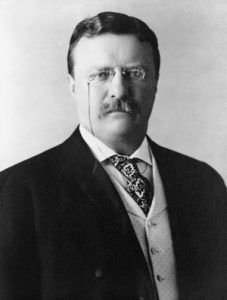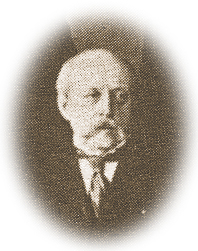President Roosevelt seeks beautiful American coinage
But there is dissension among the ranks.

Teddy Roosevelt was a big fan of beautiful coins. He disliked the existing coin designs of his era and advocated for new, more inspiring coinage.
Most coin collectors and numismatists are aware of the Saint-Gaudens $20 Gold Piece. The gold double eagle is a highly collectible coin known for its beauty and historical value. However, the story behind the Saint-Gaudens coin is quite interesting.
Late in 1904, President Theodore Roosevelt, one of the most numismatic friendly presidents, decided U.S. coinage needed a facelift. He was on a mission to bolster America’s image worldwide, a la the Great White Fleet which circumnavigated the globe between 1907-1909… Roosevelt was an admirer of ancient Greek coins, especially those of high-relief designs (where the features of the coin project far outward from the field) and saw an opportunity to further his cause. He wrote to Leslie Mortier Shaw, Secretary of the Treasury:
“I think the state of our coinage is artistically of atrocious hideousness. Would it be possible, without asking permission of Congress, to employ a man like (Augustus) Saint-Gaudens to give us a coinage which would have some beauty?”
Thwarting Congress
Luckily for the president, there were five issues that could be changed without Congressional approval: the cent, $2.50 Gold (Quarter Eagle), $5 Gold (Half Eagle), $10 Gold (Eagle), and $20 Gold (Double Eagle).

Sculptor Augustus Saint-Gaudens, a friend of the president’s, was chosen by Roosevelt to redesign the coin.
At the time, the U.S. double eagle was used in international trade and was a logical choice for redesign. While James Longacre’s Liberty Head double eagle was a fine coin, it lacked the pizazz Roosevelt sought. Saint-Gaudens, a personal friend of the president, was receptive to the invitation to redesign American coinage. This would be the first time someone outside of the U.S. Mint had designed a U.S. coin.
Saint-Gaudens and Roosevelt agreed that the new coin should have a design in high-relief with a high rim to protect the features. Saint-Gaudens wrote to Treasury Secretary Shaw, asking if a high-relief coin would be possible to produce on a large scale. Shaw met with Roosevelt to discuss the artist’s question. President Roosevelt insisted on one thing, he wanted to have beautiful coinage. Shaw responded to Saint-Gaudens with the go ahead for a high-relief design. Conversely, with his response, Shaw included a copy of a letter from Mint Director George E. Roberts which warned that the coinage of all countries should be created in low-relief.
The inclusion of a letter from the mint director contradicting the president’s wishes should have been a warning sign to Saint-Gaudens. But, in Saint-Gaudens’ defense, he had the president of the United States on his side, so what’s the worst that could happen?
Not on Barber’s watch

U.S. Mint engraver, Charles Barber, had his own ideas on what America’s coinage should look like.
Enter U.S. Mint Engraver Charles E. Barber. Ever the pragmatist, Barber had followed the progress of Saint-Gaudens’ redesign and expressed concern over the proposed relief of the new double eagle. The high-relief design Saint-Gaudens was working on was not going to be possible to mint in the quantities needed. Barber’s designs themselves can attest to his utilitarian approach to coinage. While the details of the Barber dime, quarter and half often wear away quickly, the design itself is visible in even the most worn and corroded pieces. They’re not the prettiest, but they are incredibly functional.
When Saint-Gaudens’ design was delivered to Barber, he hesitantly accepted it. At the time, the mint was also working on new designs for the coinage of Cuba and the Philippines. Barber probably didn’t want to waste his time experimenting when there was already so much on his plate. However, dies were made and a handful of pieces struck. These pieces are known today as the Ultra High Relief Saint-Gaudens. While they were beautiful, as the president wished, there was a problem. Normally, a coin took a single strike to form. Each Saint-Gaudens piece took approximately nine strikes to fully bring out the details.
What now?
Shortly after this failed attempt, Augustus Saint-Gaudens passed away from cancer. His assistant, Henry Hering was working on an updated, lower relief version of the design but Barber did not know how to contact him. When Hering arrived with the new design, Barber immediately rejected it on the grounds the relief was still much too high for regular production. Seeing the double eagle redesign wouldn’t simply go away, Barber began work on a low-relief version of Saint-Gaudens’ design.

1907 High Relief Saint-Gaudens Gold $20 Double Eagle
In 1907, as Barber worked on his design, Mint Director George E. Roberts resigned to become president of the Commercial National Bank of Chicago. Roosevelt nominated San Francisco Mint Superintendent Frank Leach to replace him. Roosevelt knew of Hering’s rejected design and the president gave Leach orders to create a second set of dies and begin production of the Saint-Gaudens double eagles based on Hering’s updated model. Approximately 11,250 pieces were struck in high relief. These took approximately three strikes to complete. It was an improvement, but still too lengthy a process for a mint issued coin. Barber soon finished his modifications. With a low-relief design in place, large-scale production began. The mint coined 361,667 low-relief pieces that year.
A masterpiece three years in the making

Rare, 1933 Double Eagle – the final year of the series.
Photo courtesy of the
Smithsonian’s National Museum
of American History
It normally takes less than a year to design, approve and produce a coin issue. The Saint-Gaudens double eagle took nearly three. Why the delay? Responsibility for the conflict surrounding this coin belongs to everyone involved in its creation. Saint-Gaudens took over a year to deliver his design. Barber fought the project for months before finally redesigning the coin to be production-friendly. The mint failed to clearly communicate the impossibility of large-scale production of a high-relief coin. Roosevelt’s steadfast desire for beautiful coinage kept him from making the necessary compromises.
But, at the same time, no one is to blame. Saint-Gaudens was fighting cancer during the time he designed the double eagle. Barber had the national coinages of two countries on his plate already; he didn’t have time to indulge in what he probably saw as the president’s whims. I assume the mint directors didn’t like to disagree with Roosevelt who, I suspect, could be intimidating. And Roosevelt himself, well, he just wanted the United States to look good and get a little respect.
Despite all the fuss of bringing the Saint-Gaudens double eagle to production, the end result was one of the most beautiful coins ever produced for circulation by the United States. Saint-Gaudens’ Walking Liberty design inspired future coin issues, such as the Walking Liberty Half (designed by Adolph Alexander Weinman, a former assistant to Saint-Gaudens), and many of the current silver, gold and platinum bullion coins.

Photo courtesy of J. Kruk Photography and Design
Kendall Bailey is a writer, blogger, and coin collector living in Southwest Minnesota. He started collecting at a young age and has spent over twenty years in the hobby. Recently, he started a coin-themed blog in an effort to meld his loves of writing and numismatics.



